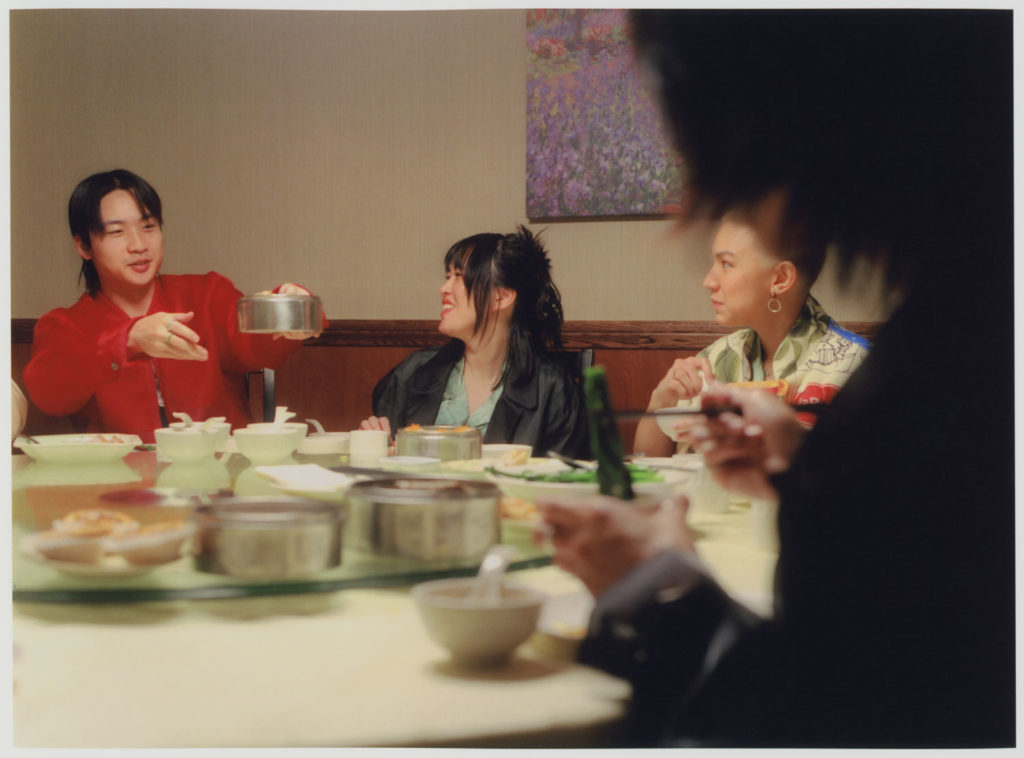
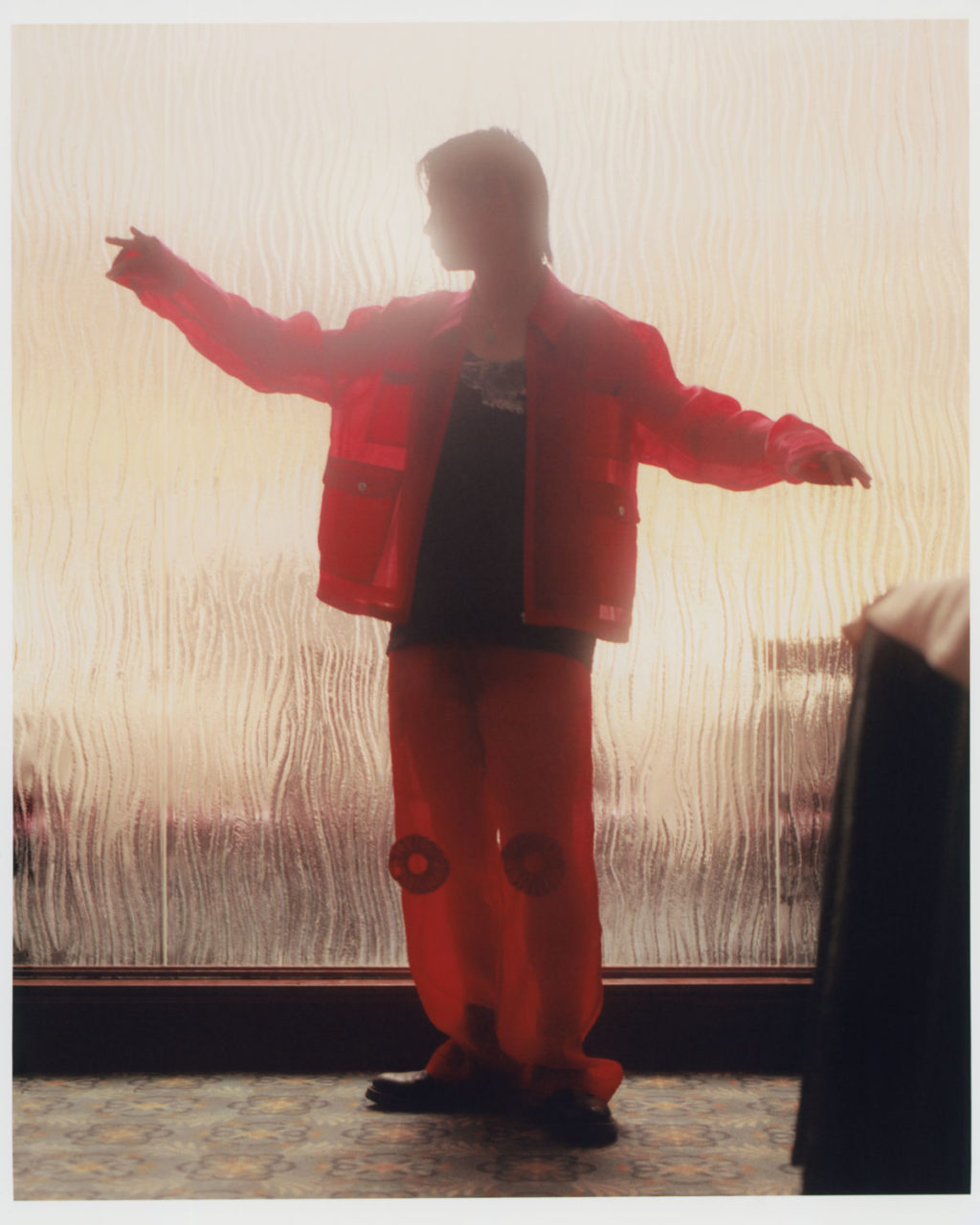
Born in the San Gabriel Valley of Southern California, Brian Tu and Wesley Tsai started out by attending business school in a conventional pursuit of success. But the desire to pave their own paths in fashion prevailed; Tu spent six years working for fabric agents and production consultants, while Tsai worked for five years specializing in womenswear product development for various womenswear brands. With their brand, STEELE + EDITH, the designers reshape their Asian American upbringings into an homage for their hometowns and heroes.
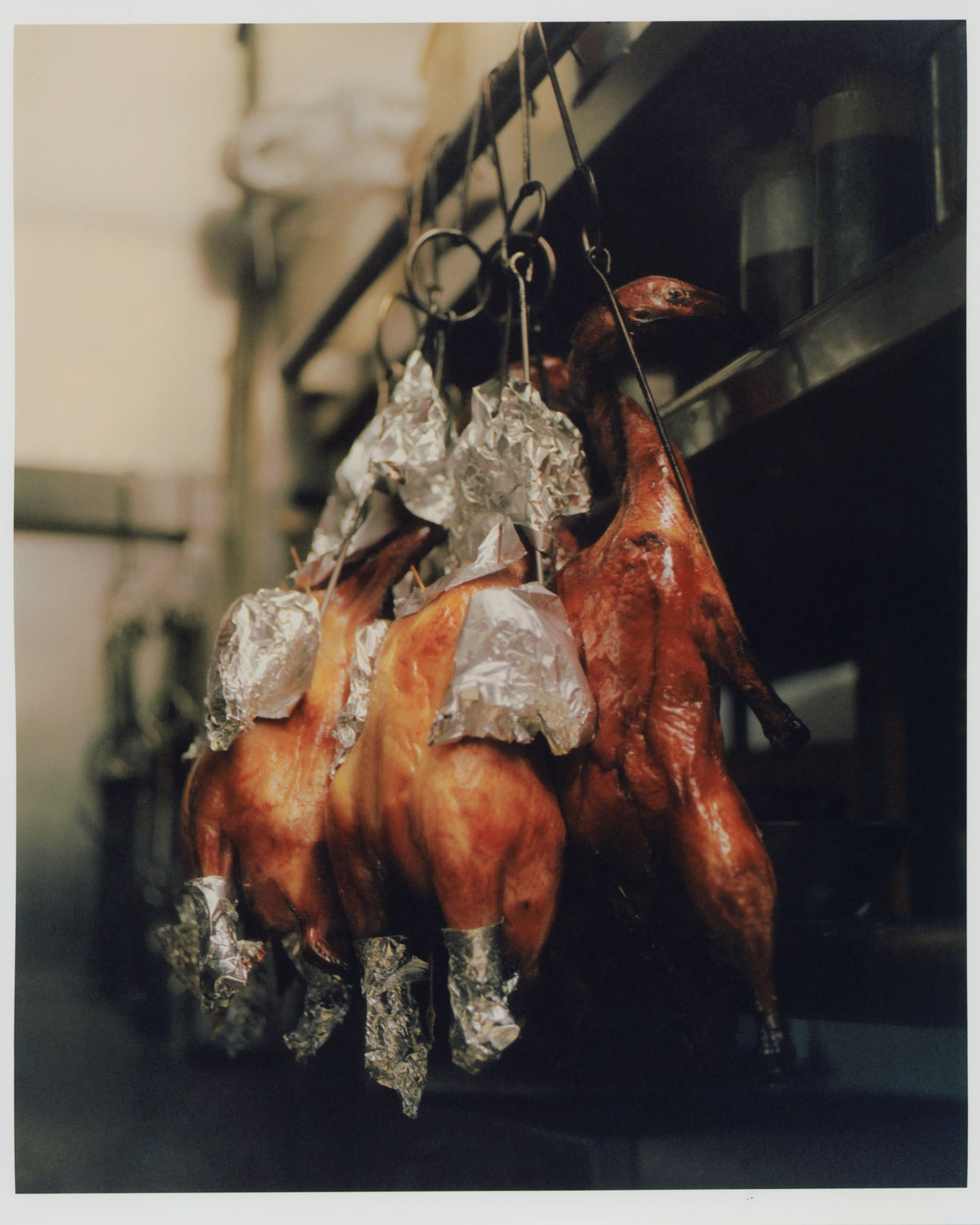
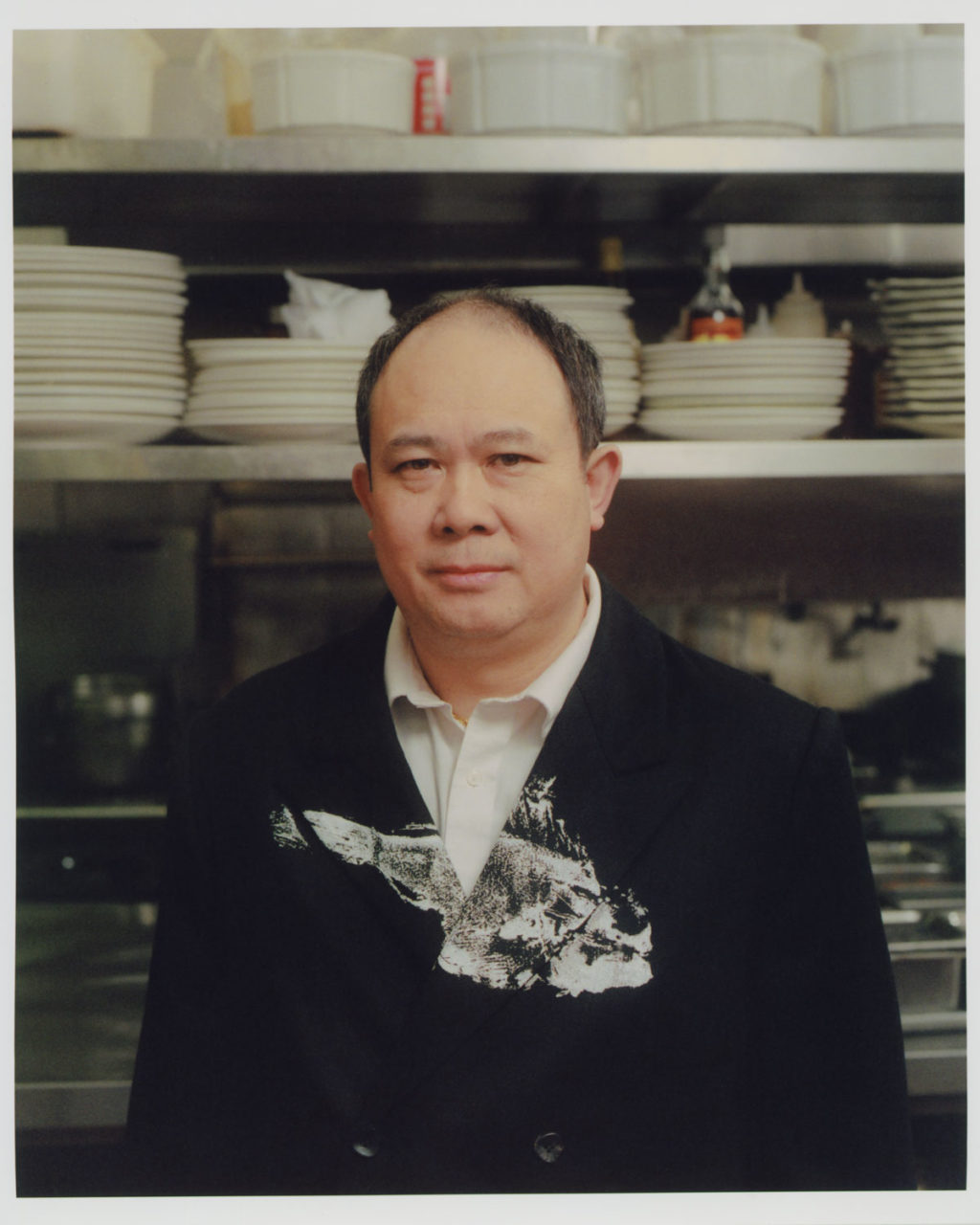
Photographed by Keith Oshiro, the JIA BUNG! campaign takes place at local Monterey Park dim sum eatery, Elite Restaurant. The cast is brought together for an early afternoon meal. Anita Hwahmee Joh sits at the dim sum table for FAR–NEAR with Ethan Ming, Kyle Bisc, Khanhlinh Su, Susan Kounlavongsa, Dennis Dang, Jonathan Lee, and Kyle Pak, to learn how they all met and how interconnected the Asian American LA scene truly is.
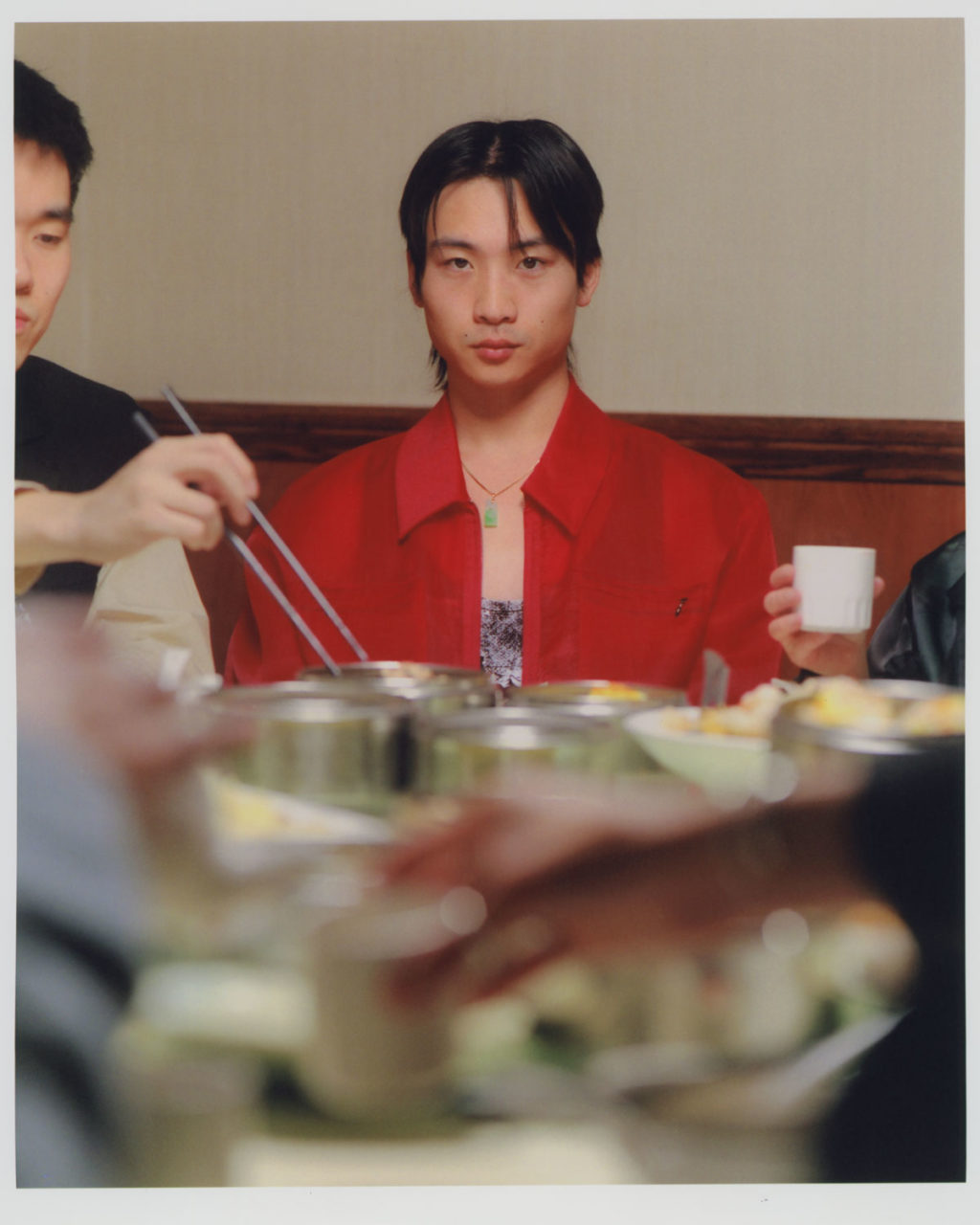

ETHAN MING
AHJ: I love getting to know the LA creative scene and how it intersects between different groups of people. It seems like a lot of initial connections turn into friendships and everyone ends up working together. You were a model for the Jia Bung! campaign but you also shot the lookbook right?
EM: Yes! I’ve been working with the STEELE + EDITH team for about a year now on shooting lookbooks and assisting with general creative assets whenever needed. I find collaborations with friends the most rewarding, especially when we have a shared creative vision.
AHJ: Having a support system in itself is great but continuing to build on it and also getting to work with your support system really is invaluable. Do you have any personal memories around food or community you can share?
EM: Food has played a large part in helping me connect deeper with my culture, especially as an Asian American. I struggled a lot with my identity growing up because I felt a disconnect between who I was and what my environment looked like, especially growing up in a predominantly white town. I shrugged off any attempt my family made to teach me how to speak Cantonese which left me in a grey area where I looked Chinese but couldn’t really participate within my own culture. Food was sort of a saving grace because it was the one area where I at least knew the names and pronunciations for all the dishes I liked. I’ve never been able to have a conversation with my grandparents because of the language barrier but sitting down at family meals was a place where I could spend time with them without needing to worry about that disconnect. They could see my emotion through how much I enjoyed the food they cooked. Or even through small acts like refilling their cup of tea or serving them a dish that was too far on the table for them to reach. In Asian culture food = love!
AHJ: I feel you 100% and it’s sort of an unspoken understanding when I connect with new friends from Asian backgrounds. I know no other way than to order “family style”, to serve my friends with my chopsticks right onto their plates and to ask if they’re full and happy from the meal. You said you found comfort in knowing the names and pronunciations for the dishes you liked, what’s one dish that brings you particular joy or nostalgia?
EM: Right! That’s one thing I’ve learned with my friends is that even though we come from different backgrounds we all communicate with the same mannerisms when it comes to food.
There’s so many I can’t narrow it down to one dish! But there’s a pairing of two dishes that definitely is nostalgic for me— Shanghainese cai fan and tang cu paigu. There was this Shanghainese restaurant we would go to when I was in high school to get these specific dishes and it was a family favorite. I still make it a point to go back to that restaurant whenever I visit home.
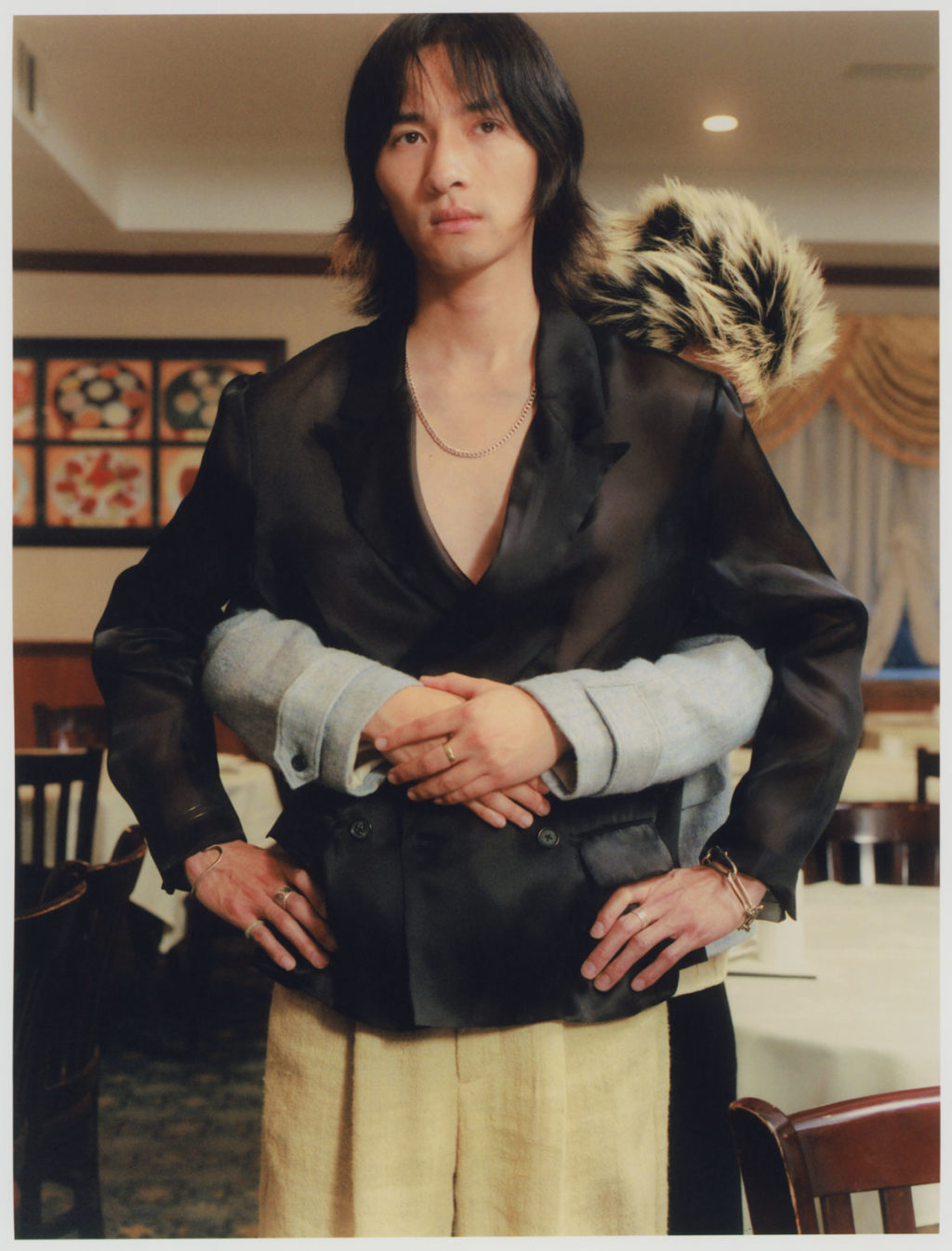
KYLE BISC
AHJ: You’ve done some styling for S+E before right?
KB: I’ve styled every lookbook for them, yes. I have an ongoing relationship with them as a brand consultant but also just as friends!
AHJ: Ethan Ming has shot a lot of the lookbooks too, I love how it’s all homies collaborating and working together.
KB: It is nice isn’t it. The most ideal way to work in my opinion. Everyone kinda just flows together, doing what they do.
AHJ: I’ve read some writing you’ve done too. Being multidisciplinary is such a strength if not a necessity. Do you freelance and consult to make up a full-time gig or do you also have a traditional 9-5?
KB: I’m so fortunate in the sense that my 9-5 is working with two friends. I split my time between a couple — the guy is a designer and the girl is a production manager. So I’m there to do everything from doing shoots to design consulting to garment production type work. But there are days where we climb on the roof and paint over graffiti, days when we’re all trying to jumpstart someone’s dead car, days when we’re all trying to catch the leaks in the studio roof with trash buckets. It’s a lot of fun.
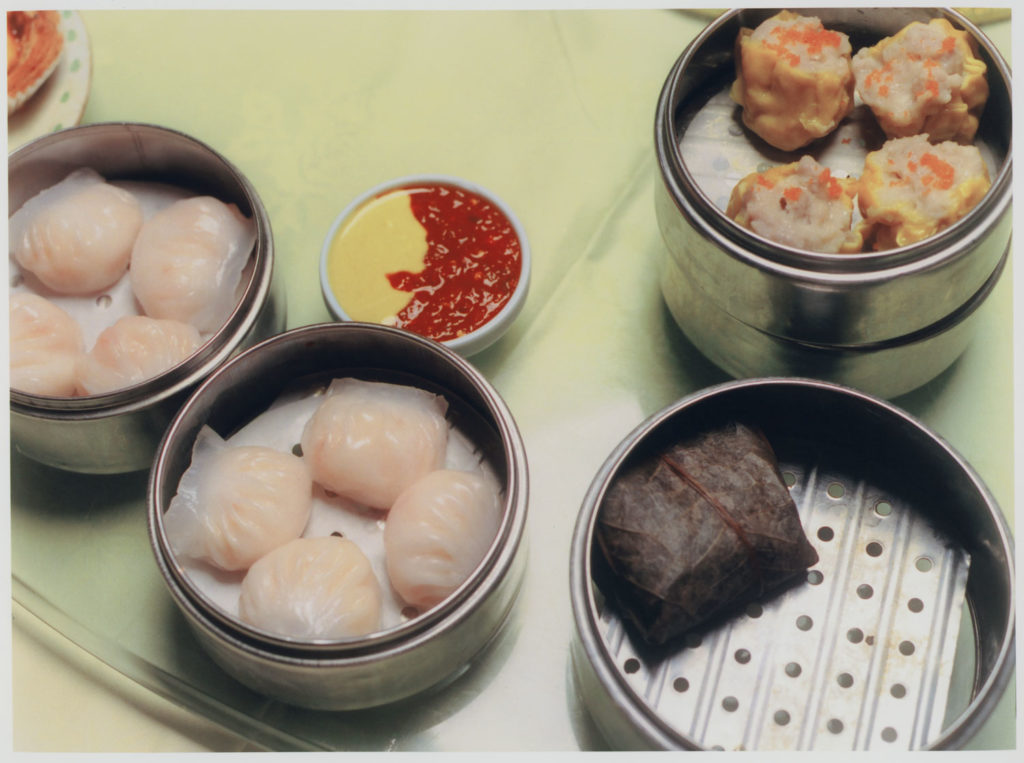

AHJ: I see a lot of community and world building within the Asian communities in LA. Overlap with friend groups too. The collaborations are everywhere and it makes things that seem far and apart, in reality actually very close and integrated. Did you already know the other people from the JIA BUNG casting?
KB: I did indeed. They were all Wesley’s friends or people I’ve met and gotten to know in different ways.
AHJ: You wrote the copy for the collection, so you have a deeper understanding of the idea behind it. Do you have any personal stories around community that you can share with me?
KB: Lately I’ve come to learn how to be comfortable with having different communities and not feeling like I need to bring everyone together — just learning to enjoy the company I keep, in the moment I’m in, for what it is. Learning to let go of feeling responsible for facilitating something that other people might not even want or be thinking of. I think community isn’t just about having the whole world in one unified group. Instead it can be about appreciating what naturally brings certain friends together and celebrating that strand of uniqueness. I guess going off of that, there’s different foods that I think celebrate the feeling within different communities, and I’m feeling appreciative that I can enjoy all of them in different contexts.
AHJ: What’s your top 3 dim sum order?
KB: Wu gok 芋角
Cheung fun 腸粉
Lo bak go 蘿蔔糕
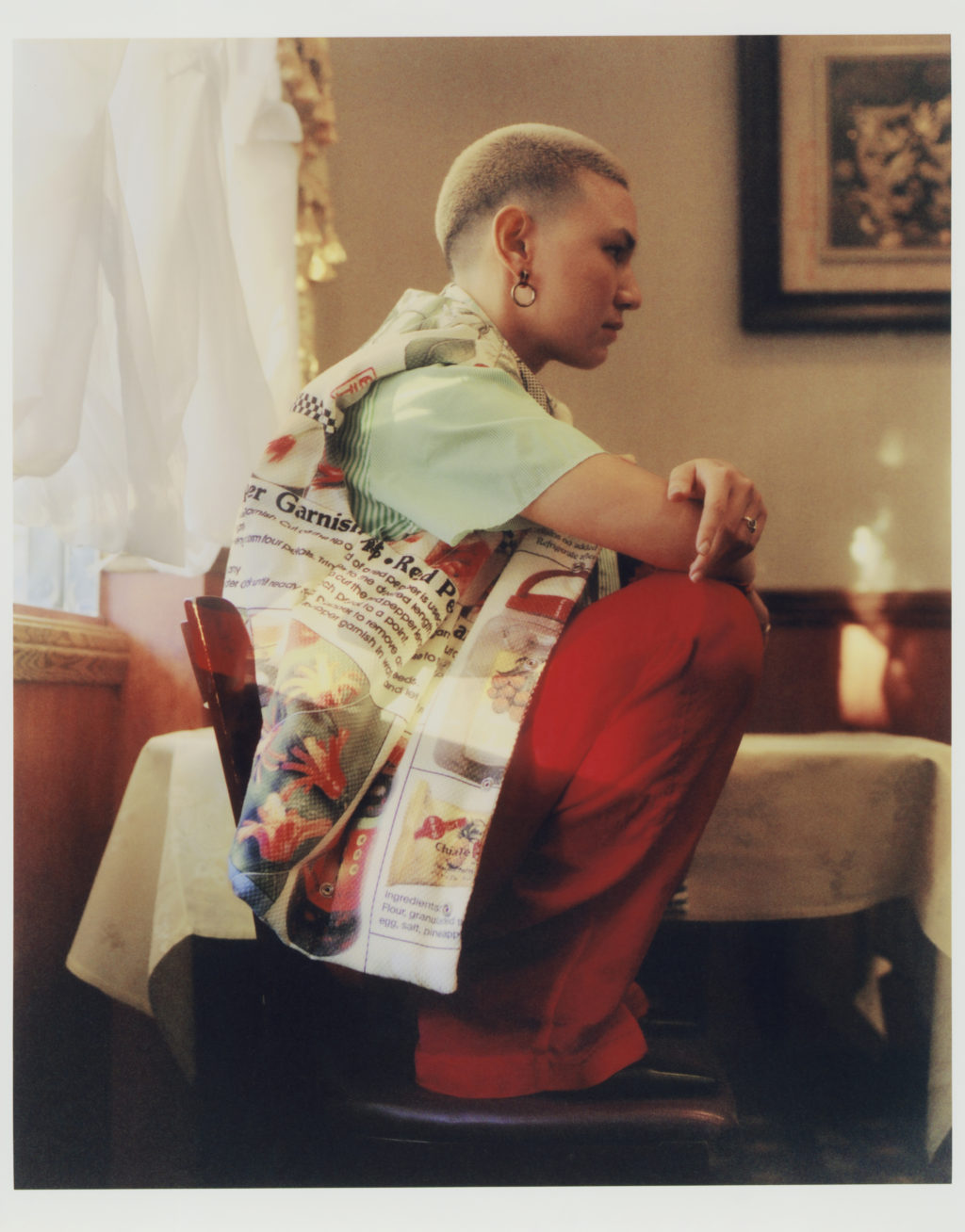

KHANHLINH SU
AHJ: Wesley said that everyone that was cast in the campaign all had their own things going on. What do you do in your day to day?
KS: My full time day job is a knitwear designer at an LA-based brand. In the evenings after work, I’m an artist who draws and paints cats. They’re mostly of my own cat but I’ve done commissions, sold prints, and original paintings & drawings.
AHJ: Knitwear by day, cats by evening. What’s your cat’s name?
KS: Yeah it’s quite a switch up but it’s much needed for my own mental and creative health. His name is Wally!
AHJ: How did you meet Wesley and Brian?
KS: I know them from high school. We weren’t close in high school but through mutual friends we connected afterwards.
AHJ: Do you have any personal memories around food or a dish that brings you a taste of nostalgia?
KS: Probably my favorite and most nostalgic dish would be the rice noodles with shrimp. Every time I have that it brings me back to the first time I ever had it at dim sum with my family.
AHJ: One of my favorite lately has been the rice noodles with the fried dough! So I’m guessing rice noodles is in your top three… what would be the #1 and #2 order for you?
KS: The rice noodles with shrimp is definitely first for me. Number two would be siu mai and third would be the egg yolk custard bun!
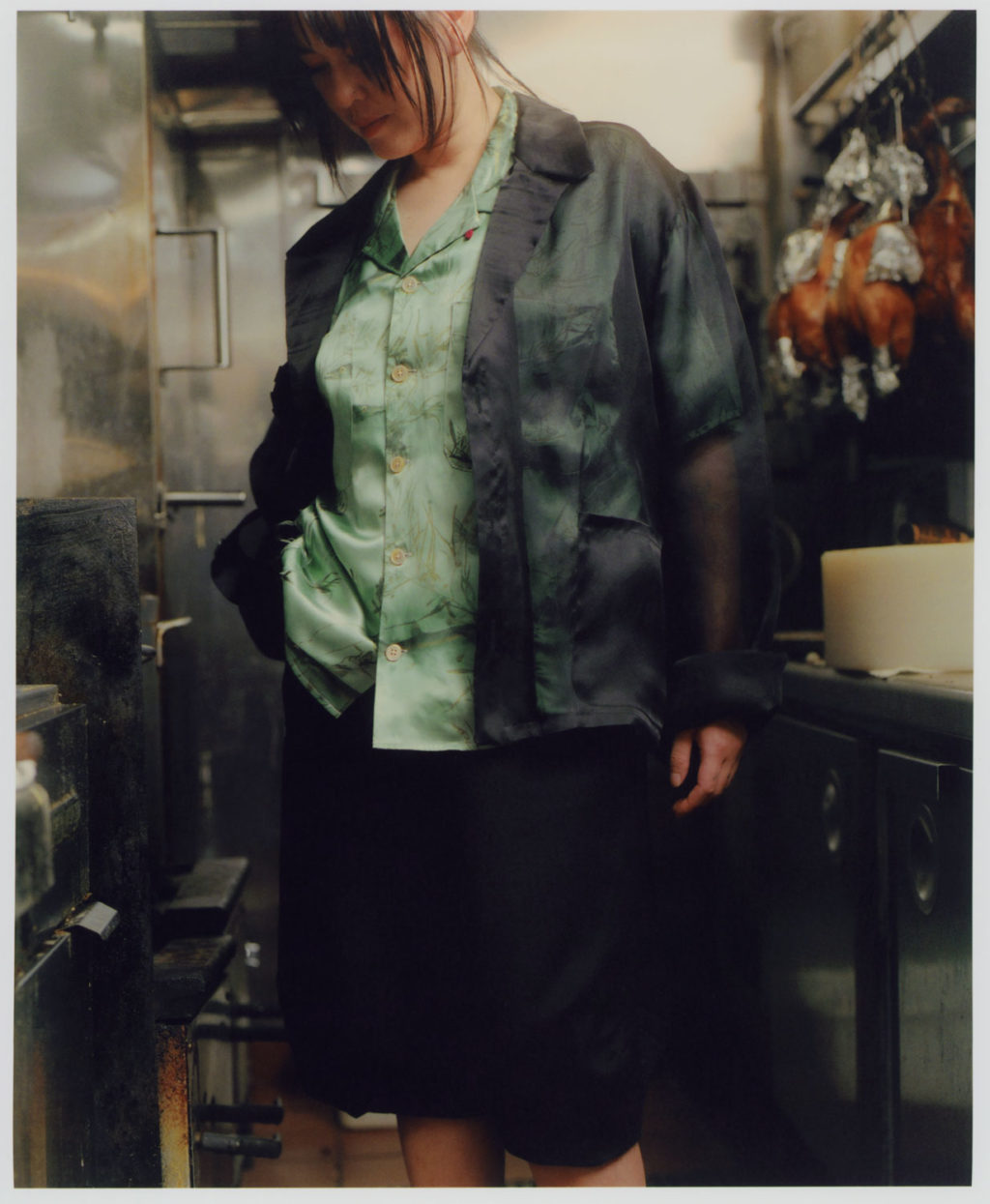
SUSAN KOUNLAVONGSA
AHJ: I hear you’re overseas?
SK: I’m in Tokyo right now.
AHJ: Are you there for pleasure or for work?
SK: Here for vacation! Will be hopping around Asia till mid June.
AHJ: Where else will you be going?
SK: I’m heading to Seoul next and then Saigon after because so many people have been saying it’s a super fun scene out there. Plus I love cooking Vietnamese food so it’ll be a food tour for me to get some inspo for when I come back to LA.
AHJ: Maybe it’s inherent but I feel like in traveling to Asian countries, the impact of food from that trip would be significant.
SK: I already have so many ideas running through my head about all the food I’ve had and what I want to make.
AHJ: Do you do a lot of cooking and hosting back in LA?
SK: Yeah, I actually do occasional food pop ups and also host friends with dinner and mahjong.
AHJ: Dinner and mahjong sounds like a perfect combination! I’m sure you have your own thoughts and experiences with the sharing of food, especially through your food pop-ups. Is there a dish that gives you that extra nostalgic feel?
SK: I find nostalgia in Asian comfort food and one that really sticks out to me is this dish in Laos called thom khem. Which is universal in every Asian culture I know. Braised stewed pork with boiled egg. Such a simple dish that brings a lot of happiness whenever I eat it.
AHJ: The Korean equivalent is definitely one that brings me back to childhood. Last question for you – top three order for dim sum?
SK: Elite was the only place I’ve been to that served this dish that blew my mind, which was youtiao (Chinese donut) wrapped in a shrimp rice roll. 2. Chicken feet 3. Deep fried taro dumpling.
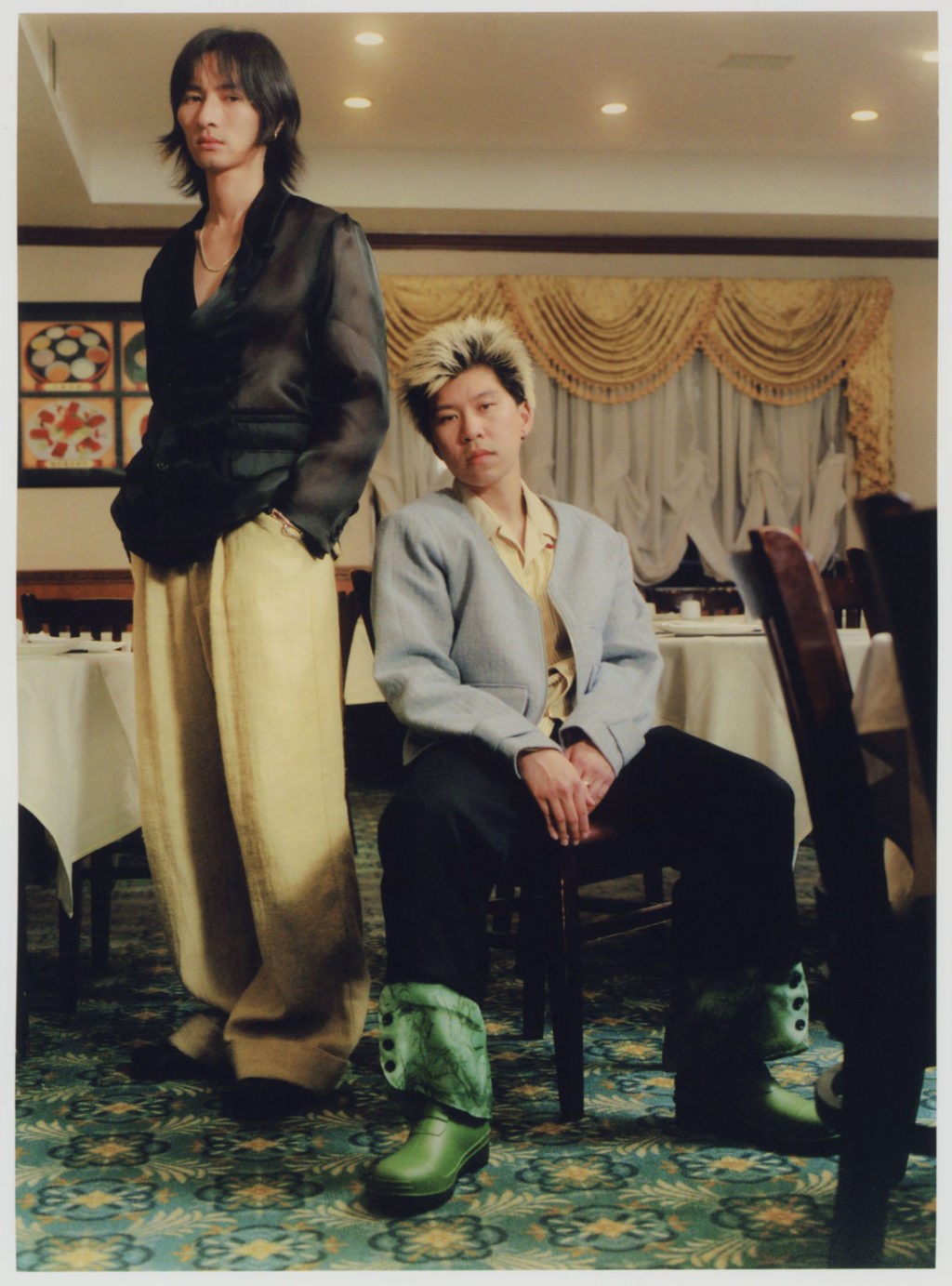
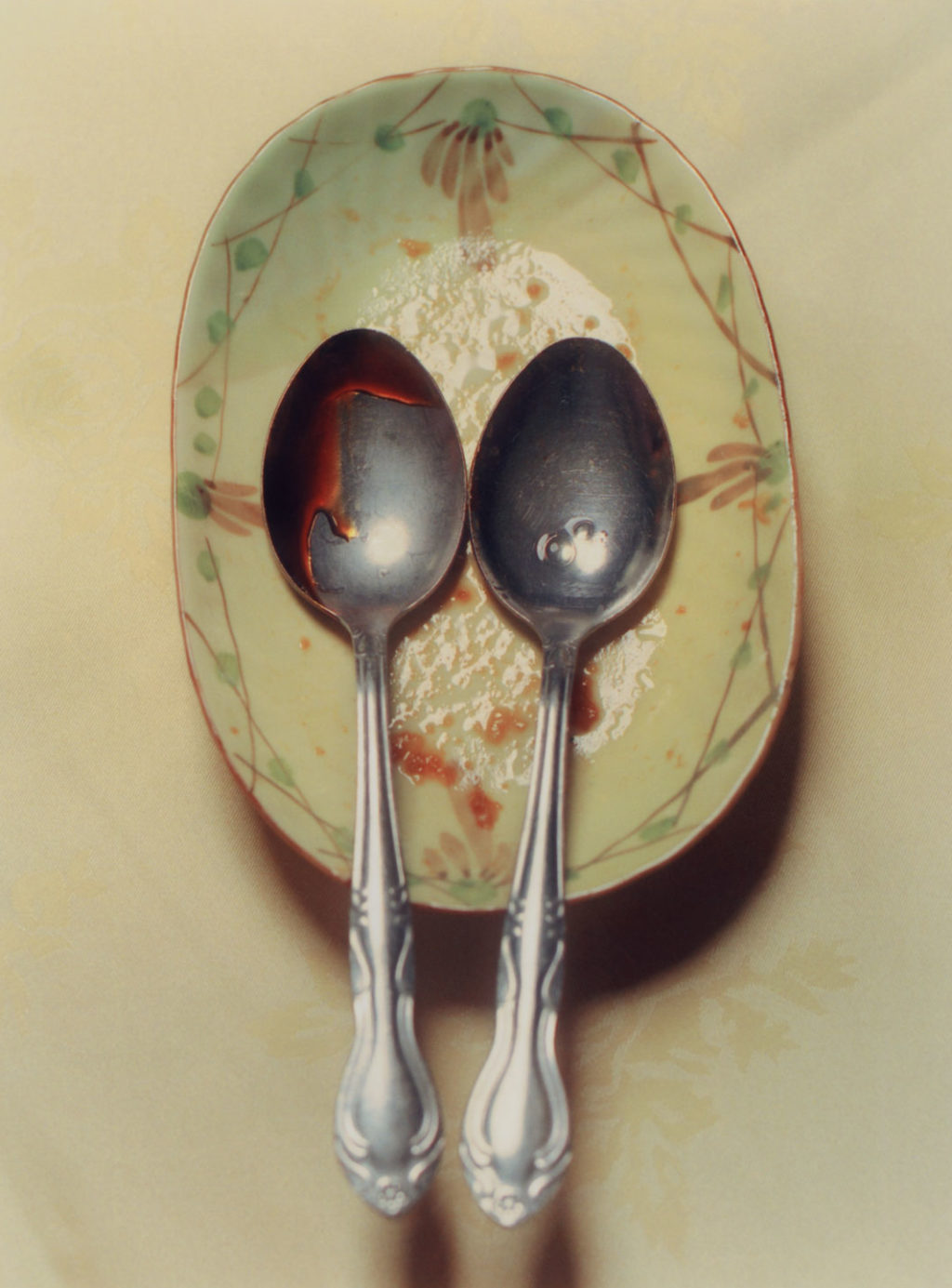
DENNIS DANG
AHJ: Are you a graphic designer for your 9-5? Freelance? Or passion?
DD: I went to Art Center for graphic design. Worked at Apple and Tesla. Designed all the interaction for Tesla vehicles for 4.5 years. Just quit 2 months ago. Now I’m starting my own studio and finding my own path focused on user interface for physical products. I’m more tech focused.
AHJ: I’ve been gathering that the LA industry is all interconnected and that there is a lot of overlap, how was it being on set with the rest of the cast?
DD: It was fun! We’re all friends stepping out of our comfort zone and modeling for fun. Some people have the look, and some people don’t. At the end everyone looked amazing. The collection is artistic, and the casting is warm and honest.
AHJ: I enjoyed how everyone in the cast had either known Wesley and Brian since high school or have integrated friend groups / working relationships with them. The community aspect of it definitely translates in the photos.
Do you feel the community in LA, whether it’s in your design work or other creative work, is supportive and receptive?
DD: Definitely! Friends are supportive and buying. The community is excited to see a fresh perspective from Alhambra. I think the more adventurous ideas are making a huge statement.
AHJ: In Asian communities, food is often at the forefront of connections. Sharing food, cooking together, trying new restaurants. Do you have any personal memories around food or a meaningful dish?
DD: My grandma made the best thit kho! It’s a Vietnamese staple. Every time I eat that I think of her. Every time I crave that, I’m just missing her.
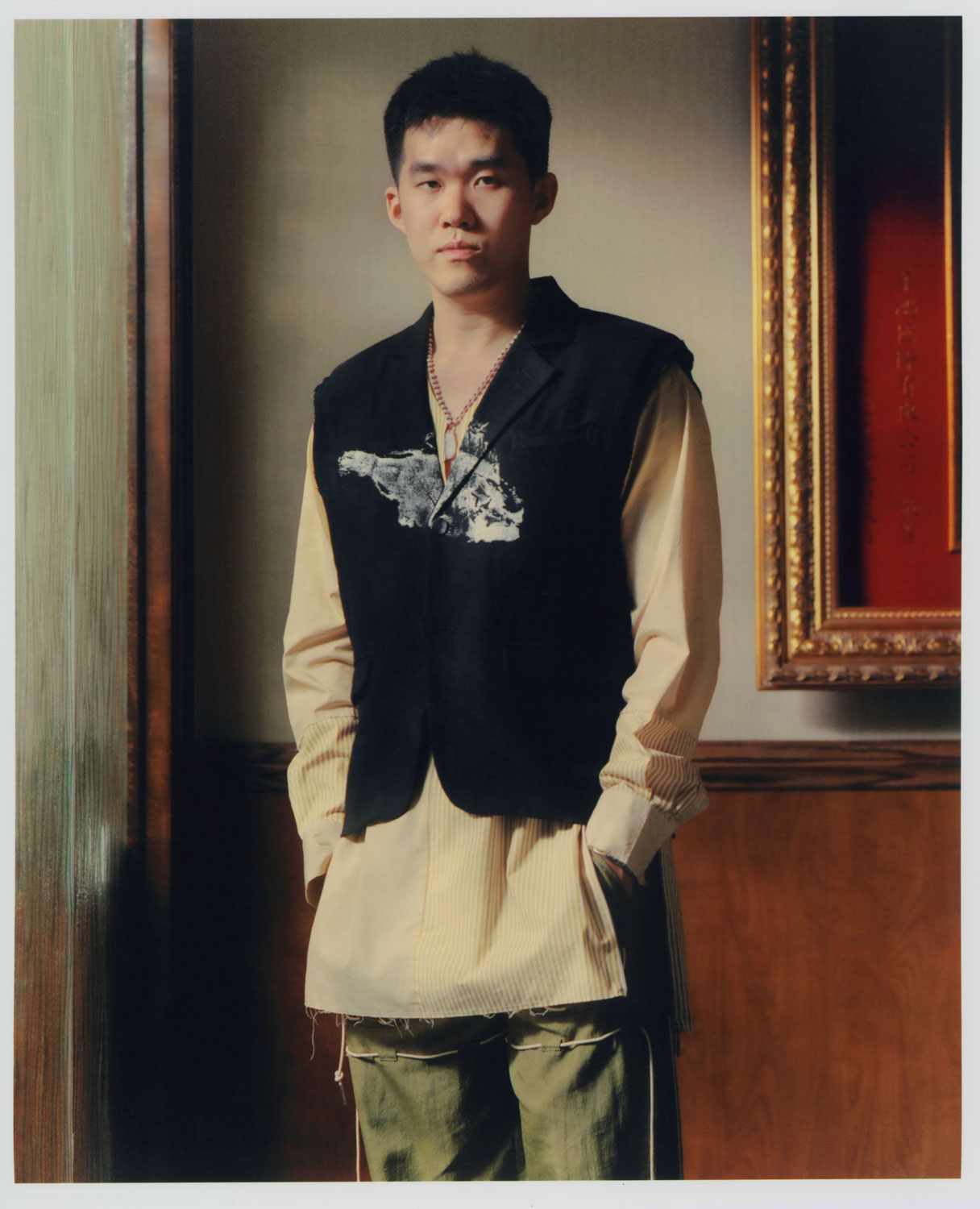
JONATHAN LEE
AHJ: Can you tell me a bit about yourself and what you do?
JL: I’m an artist/music producer. I’ve been making electronic music for 2 years so I’m still pretty fresh and figuring things out. My main thing used to be working in tech. I was a data scientist at TikTok for 3 years and recently quit to focus on music for a bit. Main thing, being how I actually made money.
AHJ: What made you make the jump from TikTok to your own music production? I can imagine taking that risk from corporate stability to something that’s just for yourself could be daunting.
JL: It was a mix of corporate burnout and growing passion for music. It just got to a point where I felt like I didn’t have enough time/energy to do the thing I wanted to do. I also saw it as an opportunity to explore my boundaries like how important is money or the title of working at a big company.
AHJ: Do you feel like the creative scene in LA has been receptive and supportive in your music venture?
JL: Yeah all my creative friends have been extremely supportive. For music specifically, I don’t feel like I’ve tapped into a specific scene yet so it’s hard to say.
AHJ: What’s your top three dim sum rotation?
JL: Chicken feet, shao mai, and the sweet egg yolk buns (steamed)


KYLE PAK
AHJ: How did you meet the guys at S+E?
KP: I met Wesley at a warehouse party in LA. The first party I went to since lockdown started. Met a lot of friends I am close to now, that night. Also Kyle Chen and Allison Nguyen. But we all got close, soon after because of LTTT. I met Brian at his house a few months later. We were exchanging HOMME BOY for STEELE + EDITH.
AHJ: I’m starting to connect lots of dots and understand how the S+E, HOMME BOY and LTTT are all sort of interconnected and overlapping. Can you tell me a little bit about HOMME BOY and what you do there?
KP: Yes, there is some sort of Asian American bond there. We are all from different parts of LA and also different cultures. HOMME BOY started as a menswear label back in 2012, inspired by the ura-hara movement of the 90’s but now I just design things I want to wear and for the community around me; film, table tennis, etc.
AHJ: Do you feel like the LA fashion and creative scene is supportive and collaborations between brands and creative teams come organically?
KP: I think when there’s a scene, especially a big one like that in LA, it comes naturally. But there are different levels and types of community here. I do feel a new energy as of recently that’s more supportive of one another. Whereas before, people including myself would take things a bit too seriously.
AHJ: Not taking things too seriously is something you’d think would be easy enough but in reality takes some time and learning to do. So many experiences I have around feeling a sense of community, is around the sharing of food. Do you have any personal memories around food that you can share with me?
KP: I look back now and realize how blessed I was in high school. My stepmom would cook my father and I Korean dishes every night. Since I moved out soon after high school, it’s been hard to get those feelings back. Also for New Years, my grandmother would cook galbi jjim for the fam and that is still one of my favorite meals!
AHJ: Galbi jjim is one of my favorite dishes too! I moved out when I was 18 so I kind of learned to cook out of necessity and through the years I definitely gravitate towards cooking Korean food. I think banchan and rice for breakfast feel very comparable to dimsum.
KP: Honestly I never ate breakfast growing up and I still don’t. I would be up surfing ebay til like 3am in high school and rushing to 1st period. But I can definitely see the similarities. Mandu for breakfast sounds like a happy time. I’d be very pleased with this.
AHJ: I definitely love having mandu for breakfast. Top three dimsum rotation for you?
KP: I think the classics, har gow, siu mai, and guotie.
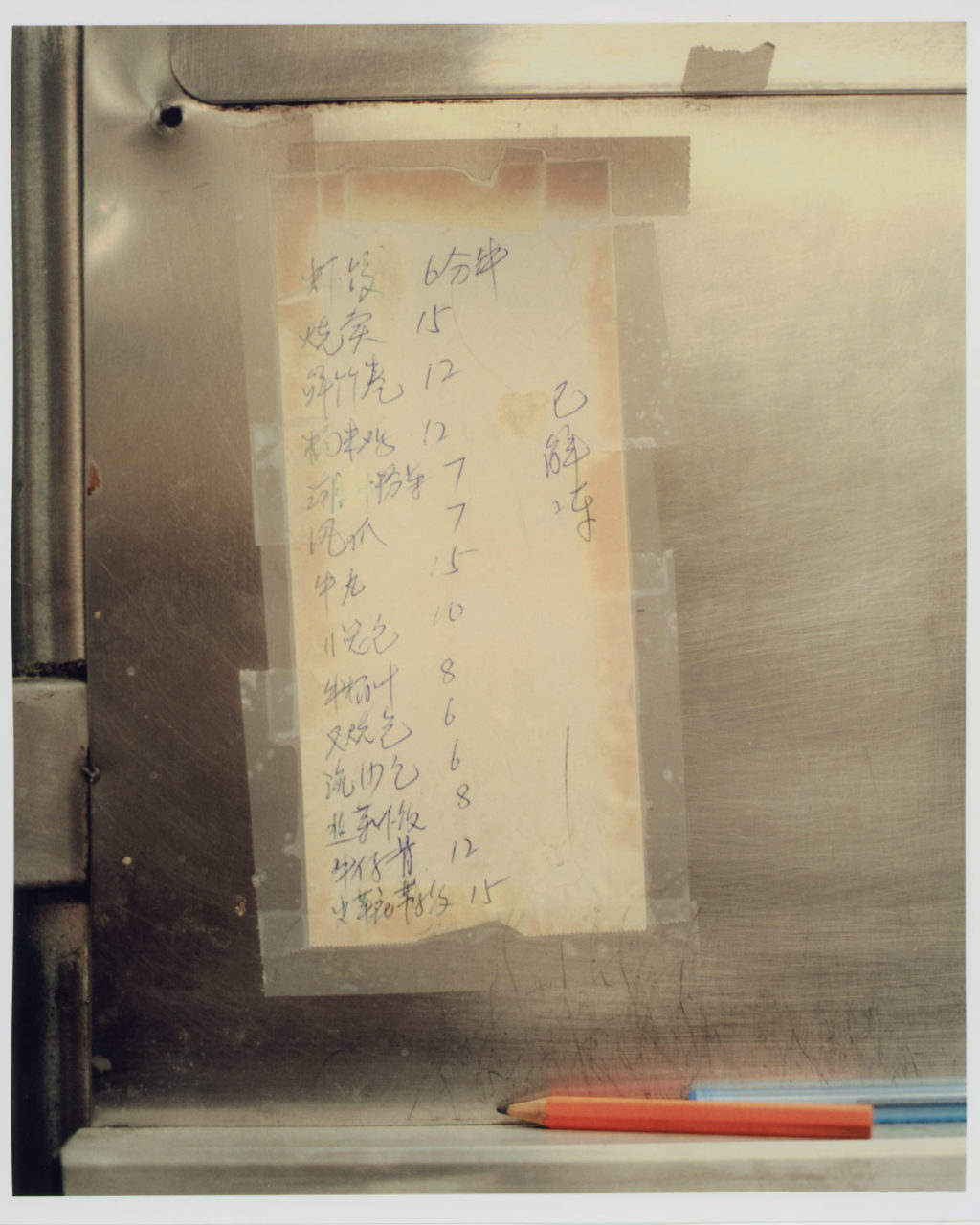
Anita Hwahmee Joh
Keith Oshiro
Kyle Bisc
Ethan Ming, Kyle Bisc, Khanhlinh Su, Susan Kounalavongsa, Dennis Dang, Jonathan Lee, and Kyle Pak for STEELE + EDITH.

